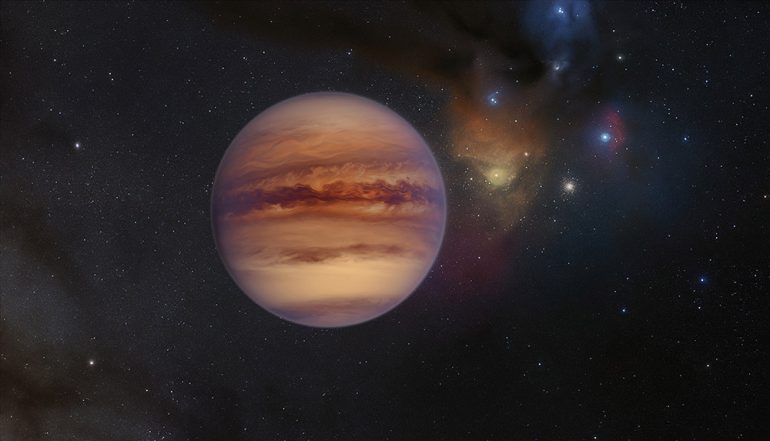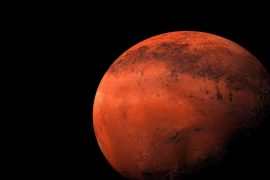Homeless wanderers: Astronomers have found between 70 and 170 lonely planets in a cluster of young stars – more than ever before. These planets do not orbit the mother stars, but move in isolation through space. The large number of these single masses in a relatively small space sheds new light on the possible mechanism of the formation of such starless exoplanets, the researchers report in the journal “Nature Astronomy.”
Most of the planets known to date are part of a system: they orbit one or more stars and form in a disk of gas and dust that surrounds their star. but there is also Single – Unbound planets that drift through space without a mother star. These stellar planets both have Earth-sized rocky planetsn too big gas giant, also on the border of some brown dwarfs.

targeted search
Astronomers working with Nuria Miret-Roig from the University of Bordeaux have detected the largest population of starless exoplanets ever detected. For their study, they evaluated observational data from over 20 years and several telescopes to search for hidden solitary planets in the nearby star association Upper Scorpius. It is about 420 light-years away and contains many of the first young stars a few million years old.
Because starless planets do not reflect light, the research team searched more than 80,000 images for the weak heat signals of still-young lonely planets, but also for the telltale motions of nearby stars. “We measured the tiny movements, colors, and brightness of millions of sources over a large area of the sky,” explains Mirat-Roig.
up to 170 starless hikers
The yield was surprisingly large: the team was able to track between 70 and 170 lone planets in the two regions. The wide range comes from the fact that there is a lot of uncertainty about the age of heavenly bodies. But since age determines their heat radiation and thus brightness, some lighter objects may already be brown dwarfs.
But considering only 70 starless exoplanets, this is the largest collection of such single ones ever identified. “We didn’t know how many people to expect and we’re thrilled to have so many,” says Mirat-Roig. Most of these exoplanets are gas giants at least the size of Jupiter. Astronomers were also unable to detect any particular abnormality in the distribution – the planets were relatively evenly distributed over the observation area.
One starless planet in every square degree – at least
The number of solitary planets allows one to draw conclusions about how often such starless wanderers occur. In the tested part of the sky, the ratio of such exoplanets to stars and brown dwarfs was 0.045, the astronomers report. Their field of observation averaged 0.5 to one starless planet per square degree.
From this it can be inferred that there are probably more such lonely planets in space than has been estimated for a long time. “There could be billions of giant free-floating planets that roam the Milky Way without a host star,” explains Roig’s colleague Hervé Bouy. This fits with earlier conjectures that this up to 50 billion Such planets may exist in our galaxy.
On the path of lonely planets in space.© ESO
How did lonely planets come about?
The large number of these heavenly bodies raises the question of how such bachelors are born. Some astronomers believe that most of them once formed in planetary systems. Later, gravitational turbulence caused by co-planets or nearby stars ensured that they were ejected from their systems. Other researchers believe it is more likely that the loners were created by the local collapse of gas clouds – the way stars form.
“Our large sample of isolated exoplanets provides us with an excellent opportunity to test theories of star and planet formation,” the researchers explain. As they found, current models of gas cloud collapse show a much lower proportion of bachelors than observed. “You predict a ratio of 0.009 to 0.019 — which is seven times less than our measurements show,” says Miret-Roig.
Astronomers estimate that at least ten percent of their starless planets, and perhaps more than 30 percent, did not originally emerge as solitary animals. Instead, they were probably part of a planetary system and were later ejected. “Planets with the mass of Jupiter are relatively difficult to throw out, which means that our galaxy may have even smaller ones of Earth’s mass alone,” says Mirat-Roig. (Nature Astronomy, 2021; doi: 10.1038/s41550-021-01513-X,
Quayle: European Southern Observatory (ESO)

Internet fan. Alcohol expert. Beer ninja. Organizer. Certified tv specialist. Explorer. Social media nerd.





